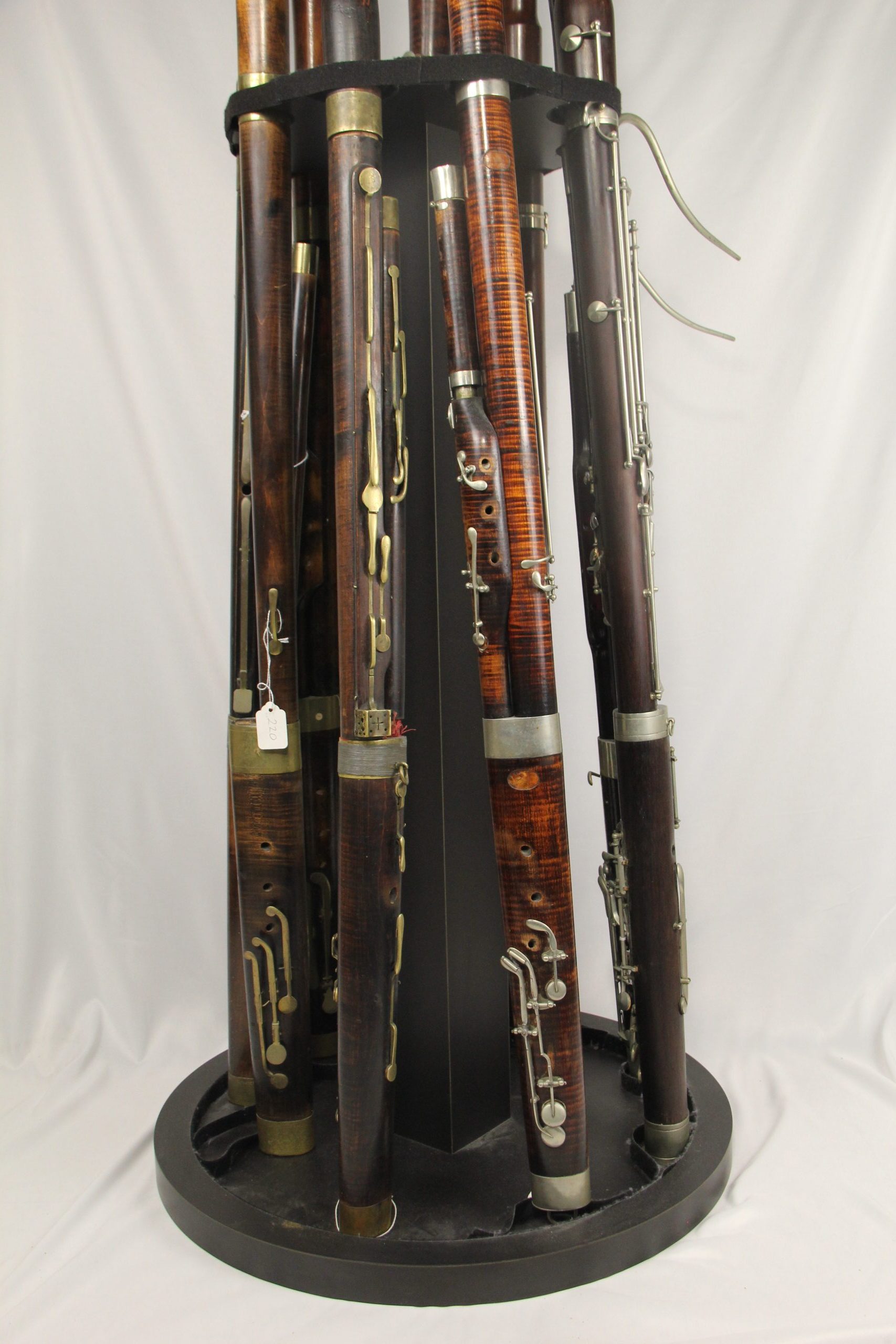11-Key Bassoon
Details
- Origin: Germany
- Date Made: 1820 – 1840
- Collection: E 220
Description
11 flat, round, brass keys, type “S” (Young) mounted in brass saddles. Key flaps contoured to body (no reamed pad seats). The tone holes for the 3 wing joint keys (C#, throat A and C) have been plugged. Springs attached to keys. Vent hole in bell to tune low Bb. Material: maple, with brass ferrules. Brass crook stamped “G4” (probably not original). Tube length: 213.6 cm. Bore: Conical. Top of wing, 1.0 cm.; bottom of wing, 2.1 cm.; bottom of long joint, 2.3 cm.; top of long joint, 3.15 cm. Condition: poor. Lower tenon of wing joint missing. Wing joint key tone holes inoperable. All keys are probably original.
This instrument may be related to the 11-key tenor bassoons used in the mid 19th century, also called “tenoroons.” These bassoons are quite rare today, and they were generally unpopular when they were being produced. Some notable tenor bassoon models were made in the late 19th century by Trièbert-Marzoli-Boehm, among other makers, and their smaller size made them well-suited for students to use before moving onto a more common bassoon model.
Sources
Kopp, James B. “Smaller Sizes of Bassoon.” Essay. In The Bassoon. New Haven: Yale University Press, 2012.





